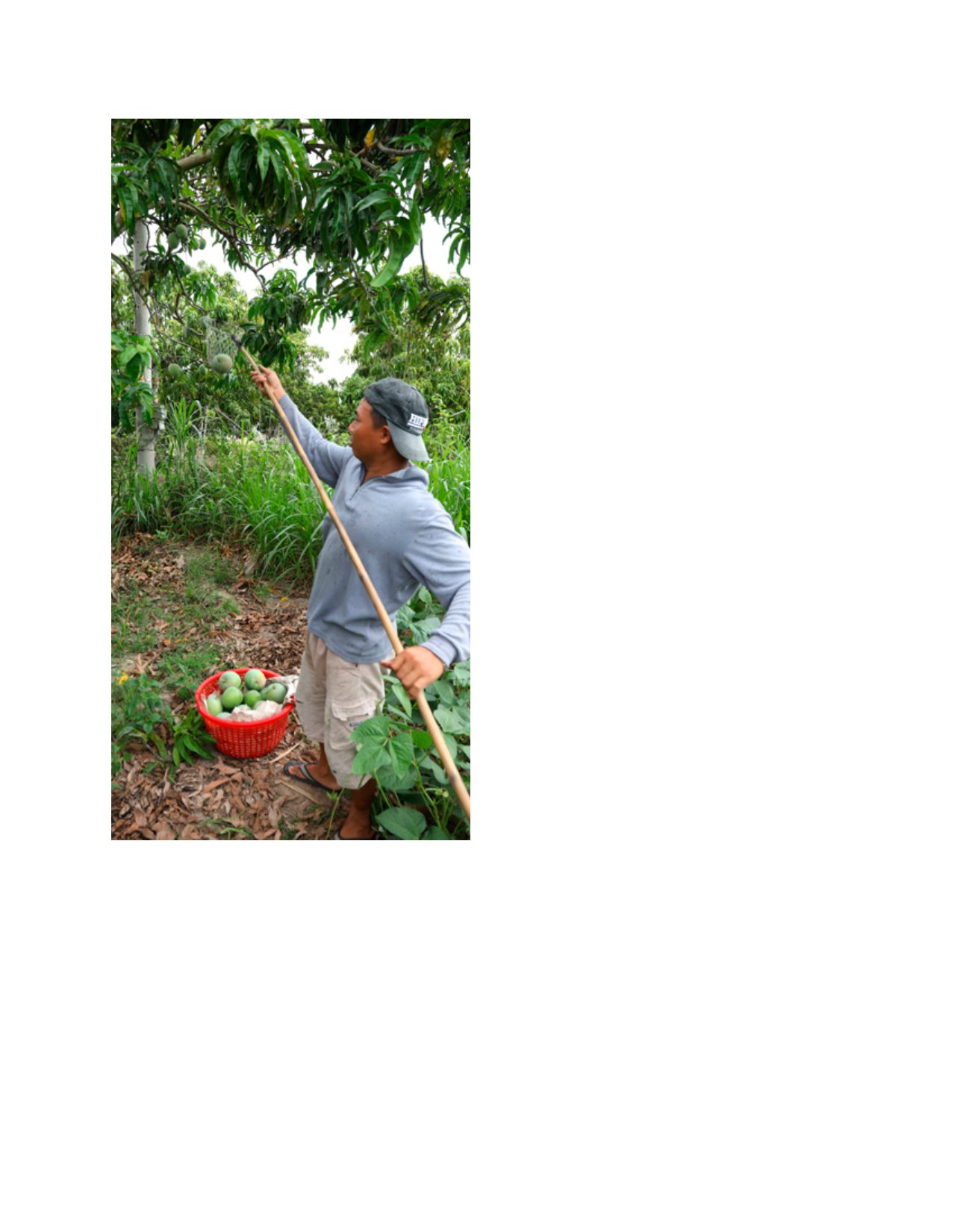

[
] 28
A B
et ter
W
or ld
the Asian Development Bank (ADB), the Government of Viet
Nam and IHE Delft. Measurements taken from five small-
scale irrigation systems growing a variety of high value crops
such as mango, coffee and dragon fruit have demonstrated
the power of the new technology.
Fig. 1 shows the range of productivity achieved for mango
growing in the Khanh Hoa Province, Viet Nam. The areas
shaded in green indicate better productivity than those in red
and it is worth noting that not all of the high productivity is
at the top end of the flow system. The red plots alert farmers
and irrigation system managers that there are improvements
to be made – most likely in farmland and water management
and other agronomic practices.
This availability of imagery showing overall irrigation system
performance in terms of WP is the first step in the diagnosis of
water use inefficiency. The future provision of this information
via farmers’ mobile phones could revolutionise how and when
they irrigate to maximise the productive use of water.
The aim of ADB piloting this application in five Asian
countries, including India, Indonesia, Pakistan, Sri Lanka
and Viet Nam, is to contribute to SDG 6.4 using actual field
measurements. In Viet Nam, preparatory field work for
the Water Efficiency Improvements in Drought Affected
Provinces initiative (proposed for financing by ADB) uses
technology as a real-time indicator for monitoring the perfor-
mance of irrigation investment, and is particularly crucial
in regions at high risk of climate impact. The initiative is
designed to raise awareness on using WP to benchmark agri-
cultural water management and will ultimately contribute to
the overall monitoring of SDG 6.4.
Managing water from above – use of drones
The act of monitoring with drones (or unmanned aerial vehi-
cles) has taken place for decades but it is only more recently
that these are being applied to improve irrigation practices.
The technology provides a higher spatial resolution (less
than 1m) for monitoring farmers’ fields, their physical infra-
structure and irrigation system operation. For example,
drones with hyperspectral, multispectral, or thermal sensors
can identify which parts of a farmer’s field requires irriga-
tion, how well a crop has grown according to plant density,
and the extent of agricultural water use. The drones can
rapidly span the width and breadth of enormous fields to
collect crop moisture data, and then sound an alarm when-
ever critically dry areas are identified. Drones enable farmers
to identify areas at risk from pests or crops that are ready to
harvest – and they can even deploy pesticides or water in that
zone. Such technologies allow time and cost savings as well
as increase water use efficiency by ensuring that the right
amount of water is delivered at the right time.
Smart farming drones fitted with various kinds of remote
sensing technology can be used to monitor crop health and
provide timely responses. Such advancements are currently
more visible in developed economies for intensive high value
cropping, like vineyards in California, US. But small steps
are being taken to bring these advances to developing econo-
mies, like Indonesia.
In 2017, the ADB approved the first performance-
based lending for irrigation programme in Indonesia. The
Integrated Participatory Development and Management of
Irrigation Programme will improve irrigation system opera-
tion, maintenance, and water delivery to farmers to increase
food production. The programme places specific value on the
use of aerial surveys and drones to strengthen asset manage-
ment and system operation and maintenance. It will also
use remote sensor agriculture WP data to strengthen system
delivery and performance monitoring.
Looking ahead – the future of efficient water management
Agriculture is the largest consumer of water, and remains
wasteful in terms of output per unit of water. Feeding an
ever-growing population and ensuring that sufficient
supplies are available for cities, energy and our precious
ecosystems will require increased crop production with less
Harvesting mango in Khanh Hoa Province, Viet Nam
Image: ADB
















